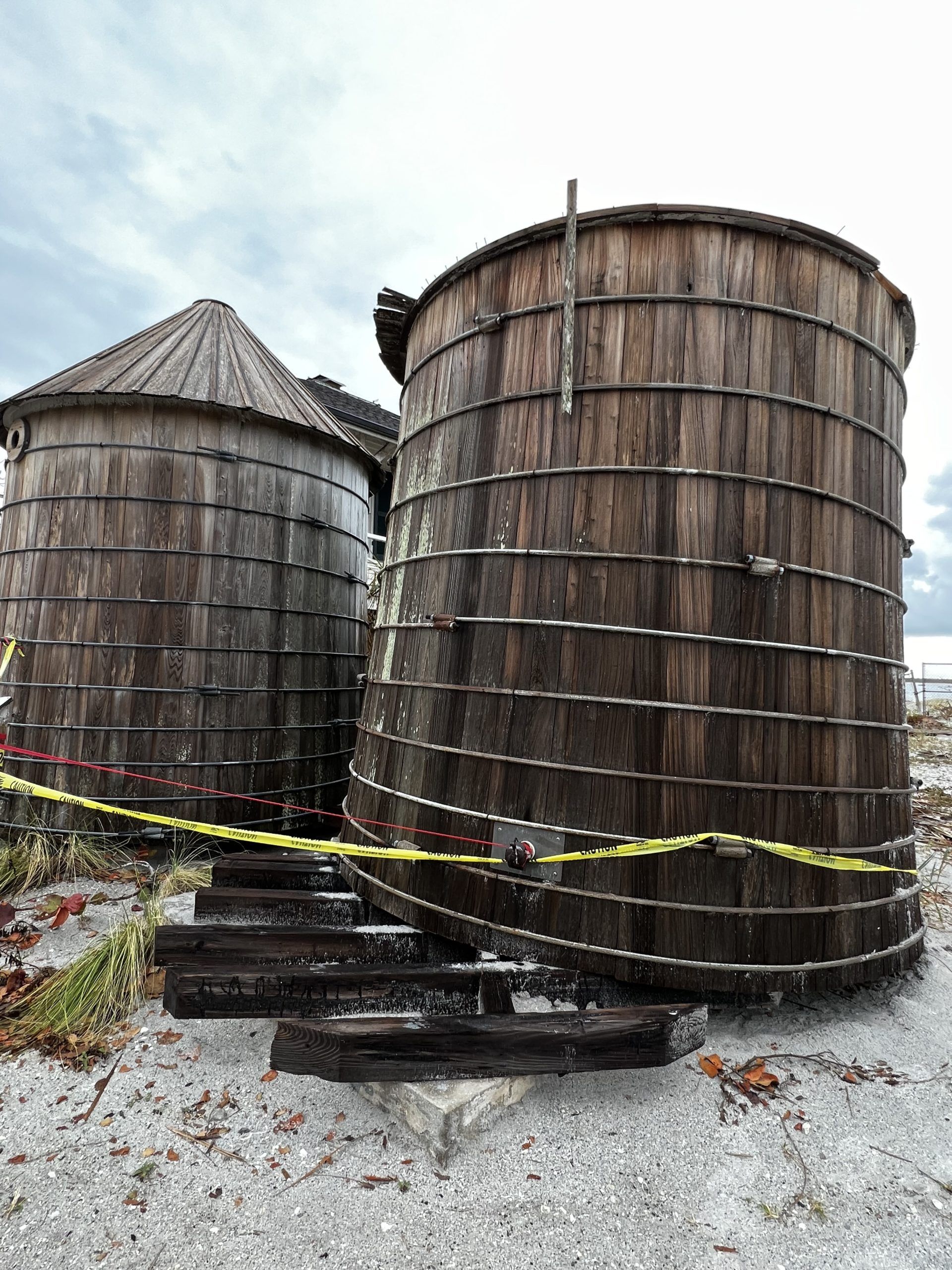Tapping into a Gasparilla Island tradition, the working cistern: Editorial

This week, the Boca Grande Quarantine Station house went on the market (see pages 16-17).
One feature of the house is a working, wooden cistern. During Hurricane Ian, the tank was disconnected from gutters, but it is still in place, with an actual hose spigot at the bottom. It functions not only as a practical way of watering the garden, but a decorative item in the garden. If you are walking at the south end of Gasparilla Island, you can see the top of the cistern, which has a small wooden church as its finial.
The Quarantine Station is not the only house with a working cistern on Gasparilla Island. There are wooden cisterns at the Port Boca Grande Lighthouse, though they do not currently work. In town, a number of houses have in-ground cisterns; there is even a house in town that has an early 20th century working cistern underneath. It provides all of their irrigation needs; water bills are only slightly more than minimums.
The Fust Library has a fully working cistern. The 1949 design for the Fust is constructed in an Anglo-Caribbean Bermuda style, with a concrete tile roof. A gutter runs the perimeter of the Henry Richardson Shepley building, directed to a cistern under the building’s upper arcade. It is still the primary watering source for the garden.
All of these cisterns greatly help the efforts of the Gasparilla Island Water Association, as they are concerned about water usage.
In recent years, cisterns have been promoted by preppers, as a backup for urban water systems. However, there are a wide variety of commercial uses for cisterns, as they are used to store well water, air conditioning condensation or water for fire protection. There is even a Tennessee company, Perfect Water, which sells complete home cistern systems.
The promotion of cisterns is valuable to the state of Florida, there is a public interest in not wasting water from aquifers. Ray A. Bucklin, professor emeritus, Department of Agricultural and Biological Engineering; UF/IFAS Extension, Gainesville, offers an online guide to cisterns, with a math formula to determine the amount of rooftop needed to fill a cistern.
The Florida “underground” gardener David the Good of the website thesurvivalgardner.com is an advocate. He writes in his book “Grow or Die” that almost every house in the Caribbean, where he farmed for a time, had a cistern, as the water systems were undependable. David comes at the need for a cistern as a matter of economy, and a way to lessen dependence on the grid, which sometimes (or often) fails.
“Roofs are water catching machines,” David the Good writes. “A roof can seriously catch a lot of water, and if you want to hold onto that water, you need to step up.”
A great primer on Florida rain patterns is Prof. Morton D. Wisberg’s 1990 book, “Florida Weather,” published by University of Central Florida Press. The book looks at Florida’s climate over the century. He takes comfort in the fact that our chief sources of rain are water vapors from the Gulf and Atlantic, and they have been proven dependable over the long term, but erratic each year.
Wisberg notes severe droughts in almost every decade, including in 1980-82, which occurred after a decade in which only four years had average or above average rainfall. In June of 1981, Lake Okeechobee was at its lowest level ever, putting agriculture at risk, Wisberg writes. The state recovered in 1983; there was so much rain that there were issues similar to today with runoff and ruined marine life.
Floridians have always been creative about water. A 2018 report by the Department of Interior shows that the state leads the nation in desalinization, with 167 municipal desalination plants, more than drought-prone California with 58 and Texas with 52.
The effort of Elon Musk to turn America’s roofs into Tesla Solar Roof collectors is a practical one; the idea is to not put the solar collector on top of the roof, incurring two costs, but to make the roof tiles the solar panels. A Tesla roof requires bigger gutters, as the water comes off the glassine shingles faster than a traditional roof. That may mean that an add on feature of the roof could make a cistern even more useful, as it would fill quickly.
It may not be practical for everyone to have a rain barrel, especially when you are here only a few months over the year. But what is notable about them is how well they work, and how much they improve the quality of life, when they are well thought out. Perhaps new builds could seriously consider this option?
Back to the Quarantine House cistern. Part of its utility is its decorative beauty. It is not an ugly plastic barrel. It sits in the courtyard next to the house, in a pool terrace made of old brick. It shows a practical way of living.
Boca Grande can be a model community; people copy what they see here.
So, let’s get the kinks out, if you will, for a solution that helps us all.
Garland Pollard is the editor of the Boca Beacon. Email editor@bocabeacon.com.









